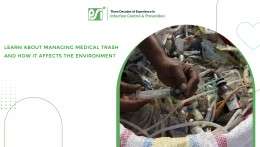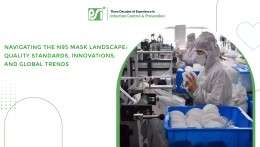One of the best Surgical Disposables company. I am dealing with them for the past 5 years,
their products are world-class. Their approach to trade is professional. All the best wishes to
them.
Augmenting Patient Safety: Identifying Challenges, Conducting Analysis, and Implementing Solutions
- By: Plasti Surge Industries
4xwz.jpg)
Patient safety is a fundamental principle of healthcare, integral to the prevention of errors and adverse effects on patients associated with healthcare. Its significance is underscored by its impact on patient outcomes, healthcare costs, and community trust in the healthcare system. Patient safety challenges are expansive and found around the globe, reflecting the breadth of the whole picture of patient safety, medication errors, surgical mistakes, healthcare-associated infections, and diagnostic inaccuracies that lay claim to tens of millions of lives each year.1,2 In-depth healthcare safety analysis is integral to understanding and addressing these challenges, identifying their causative factors and successfully implementing effective interventions. Equally important is the matter of ongoing improvement in patient safety, as a growing and advancing healthcare system becomes more complex and interwoven at the same time.
Identifying Challenges
.jpg)
- Medical Errors: The prevalence of medical errors is a major item of concern. The term is an all-encompassing one that covers medication errors, surgical errors, diagnostic inaccuracies, treatment failures, and healthcare-associated infections. No matter the specific classification, these errors will invariably lead to decreased patient safety, preventable harm, longer stays in the hospital and higher healthcare costs. Finding answers to these errors is an essential part of patient safety solutions; it concentrates on improving the quality of care and protecting patients from medical errors, which result in unnecessary adverse events.
- Healthcare-Associated Infections (HAIs): These so-called healthcare-associated infections – examples include surgical site infections, catheter-associated urinary tract infections, and bloodstream infections – pose significant dangers to patients’ safety and result in major morbidity, mortality, and increased healthcare costs. Implementation of patient safety solutions, such as strict adherence to infection control practices and antimicrobial stewardship, can help to mitigate these risks.
- Staffing and Workload: These so-called healthcare-associated infections – examples include surgical site infections, catheter-associated urinary tract infections, and bloodstream infections – pose significant dangers to patients' safety and result in major morbidity, mortality, and increased healthcare costs. Implementation of patient safety solutions, such as strict adherence to infection control practices and antimicrobial stewardship, can help to mitigate these risks.
- Technology and Equipment: Modern technology and equipment make both positive and negative contributions to patient safety. For instance, electronic health records and advanced diagnostic imaging and analytical technologies help improve diagnostic accuracy and treatment effectiveness. Precision medicine technologies are improving treatments for a wide range of conditions, among many other examples, and wireless ICU monitoring systems reduce patient wires and increase patient mobility, while monitoring vital signs that help identify decline and trigger a rapid response when a patient takes a turn for the worse.But new technologies, and the complex systems to which they are added, introduce new risks, and equipment failures continue to be one of the leading causes of patient safety incidents. Training protocols must be rigorously followed and maintenance protocols must be consistently maintained to avoid increasing the potential for such incidents.
- Communication Breakdowns: Miscommunication among healthcare professionals is a leading contributor to medical errors, which are directly responsible for patient morbidity and mortality. Poorly executed handoffs in patient care, misunderstandings between surgical team members, and imprecise interpretation of diagnostic images are common consequences of suboptimal communication in healthcare. To enhance patient safety, healthcare institutions must adopt communication protocols of comparable adaptability and resilience as those found in aircraft and nuclear power plants. Such protocols might include standardized procedures for patient “handoffs” between healthcare providers and structured “briefings” for multidisciplinary teams to ensure accurate, complete, and timely communication among all members of a healthcare team.
Conducting Analysis
- Root Cause Analysis (RCA): Root Cause Analysis (RCA) is a systematic approach used to identify the fundamental underlying reasons for safety incidents, enabling the implementation of effective solutions to prevent recurrence.
- Data-Driven Approaches: Data analytics plays a crucial role in identifying trends and patterns in patient safety issues, providing insights that guide targeted interventions and policy changes.
- Patient and Staff Feedback: Feedback from patients and healthcare staff is invaluable for identifying safety concerns, and offering direct insights into the quality of care and areas needing improvement.
Implementing Solutions
.jpg)
- Training and Education: Ongoing training for healthcare professionals is essential to equip them with the skills and knowledge necessary to meet evolving patient safety challenges effectively.
- Policy and Procedure Reforms: Revising policies and procedures based on comprehensive healthcare safety analysis can address systemic issues, ensuring practices are aligned with the latest standards and research.
- Technology Solutions: Technological innovations, such as electronic health records (EHRs) and patient monitoring systems, are identified through healthcare safety analysis as critical tools in enhancing patient safety by improving accuracy and continuity of care.
- Cultural Change: A shift towards a culture of safety within healthcare organizations, where reporting errors is encouraged and utilized as a learning tool, is essential for continuous improvement and preventing future incidents.
- Collaboration: Interdisciplinary collaboration is vital in devising and implementing patient safety solutions, leveraging diverse expertise to address complex safety challenges comprehensively.
Conclusion
Bringing one’s back row is an intensive journey, full of challenges but also rewards. It’s unique in that it truly can transform a system. We can better protect those we love, and those we care for as healthcare professionals; but reaping the gifts of patient safety will take us all —hands, hearts and minds. If healthcare professionals, policymakers and those we care for as patients, work together we could all make a great leap toward “zero.” It is a challenge made that much greater because the need for safe care is so immense and it is calling to us to reach for it, together. We can make a great leap toward “zero” by embracing the most current evidence-based practices, the wave of current and future technology opportunities, and the transformation of healthcare that will be required for this to happen. A culture of safety and transparency must root and grow in the closed walls and margins of healthcare. For more insights and to join the great leap toward “zero” visit https://www.psidispo.com/. Let’s all make “zero” a goal we can all be happy to reach for.
One of the best companies to partner with. Very responsive and best product quality.
Good experience and corporation for many years. Timely services are provided.
We have been associated with PSI since more than 20 years now. They have superior products, prompt service & courteous people. Using PSI’s products in turn makes our customer happy and helps us to do more business. Overall truly delighted with their customer service.

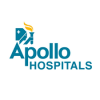

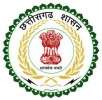
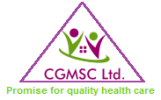
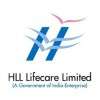
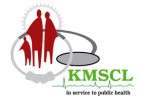



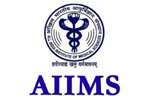
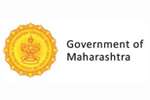


_iCEz.jpeg)
 +91-7798800781
+91-7798800781
4eby.jpg)
